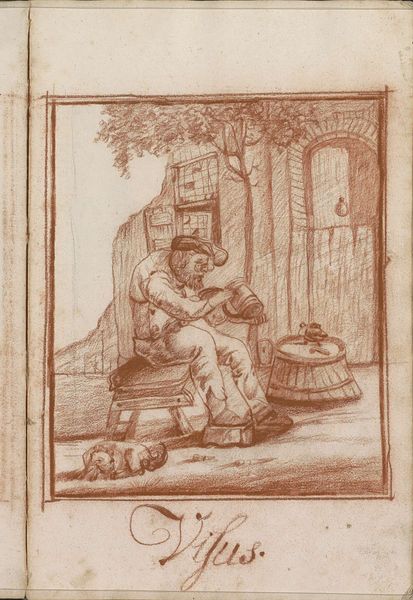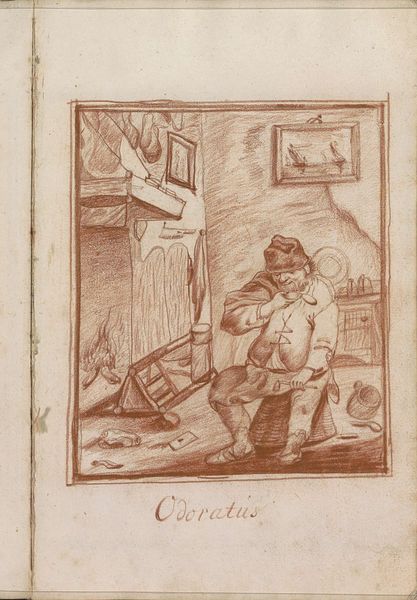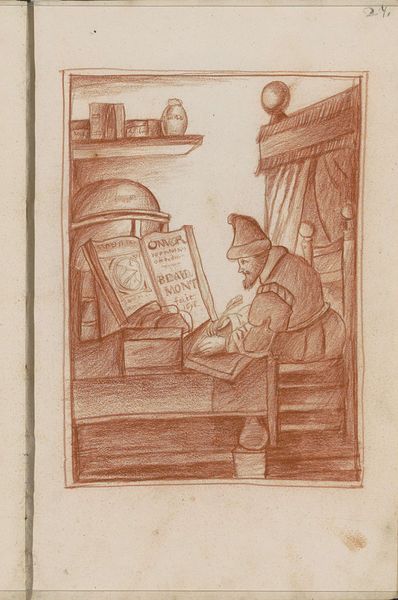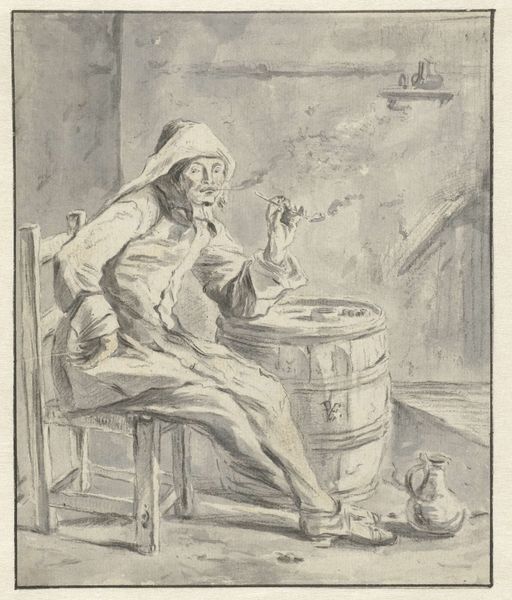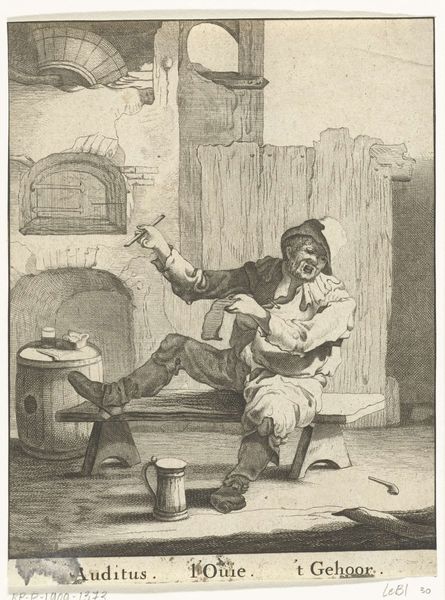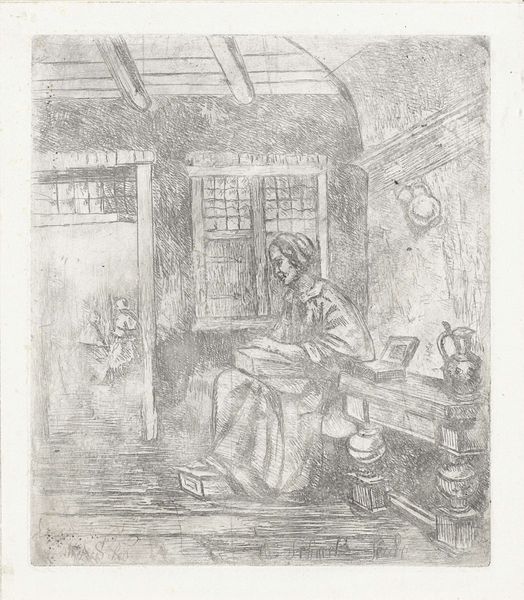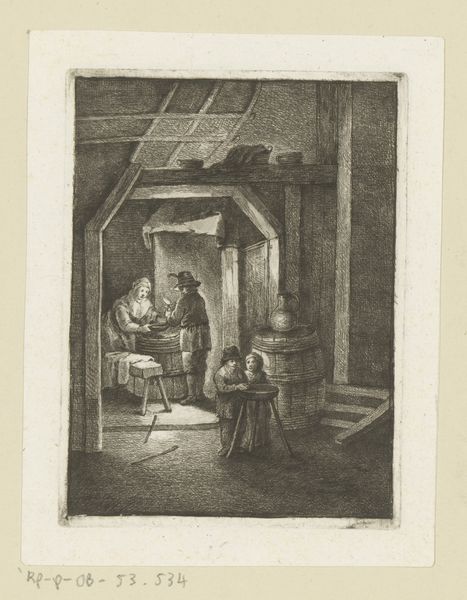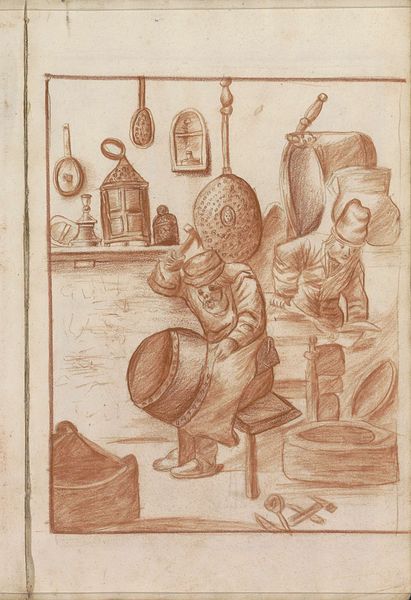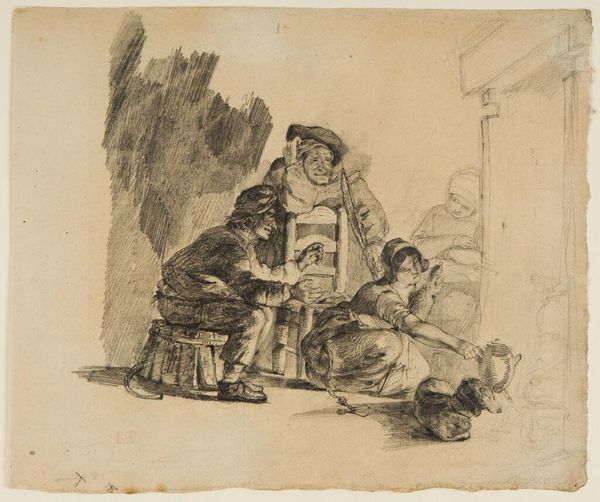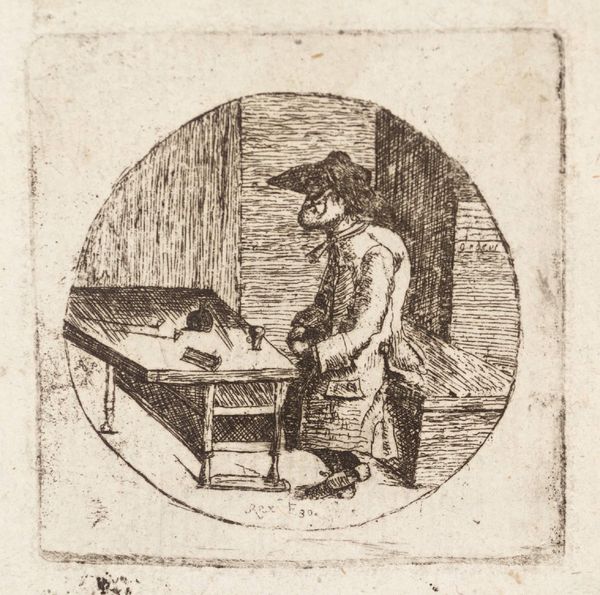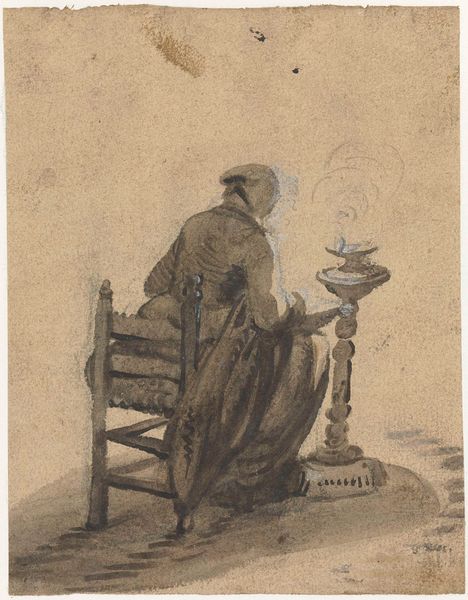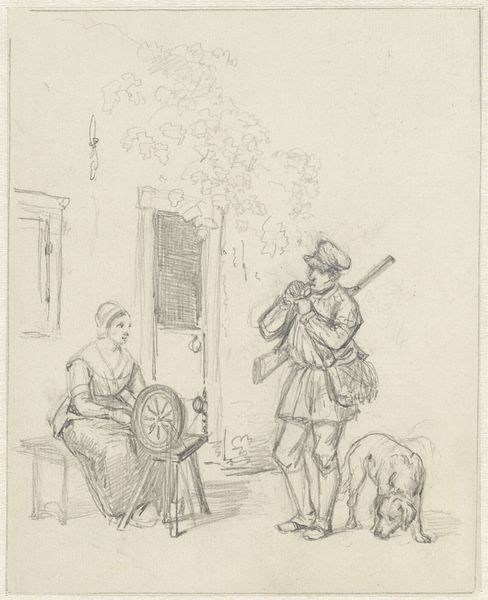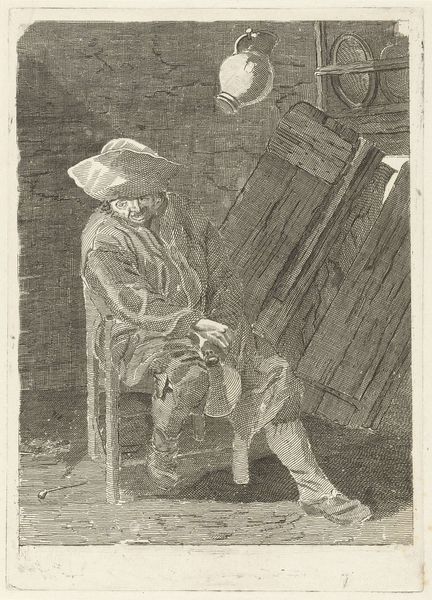
drawing, pencil
#
portrait
#
drawing
#
dutch-golden-age
#
pencil
#
genre-painting
Copyright: Rijks Museum: Open Domain
Editor: This drawing, "Gehoor," created in 1696 by Hendrick van Beaumont, seems to depict a relaxed domestic scene, maybe a bar. The material and hue evoke a sense of warmth. How would you interpret the role of everyday life portrayed here? Curator: What immediately grabs my attention is the figure’s agency, or lack thereof, amidst his everyday rituals, like smoking and drinking. It prompts the question: how might socio-economic structures define these forms of labor and leisure for the working class during the Dutch Golden Age? His expression isn't just relaxed, but carries a burden. Editor: That's a keen observation; I was seeing relaxation, but I can now see that "burden" more clearly, as you say. What does the environment of a tavern reveal? Curator: Precisely. Taverns in Dutch Golden Age paintings often function as spaces of social interaction, but also potential sites of exploitation, class differences, and even political discourse among common folks. Is the artist pointing to something about the political lives of average people by setting his drawing in a space dedicated to commerce and the fulfillment of bodily needs? How much agency does a person really have in shaping their own economic participation when systems exploit them at every level? Editor: I see it now! The tavern then becomes a backdrop to explore this power dynamic between labor and consumption, but it can't simply be read at face value. Curator: Exactly. What’s fascinating to consider is how spaces and interactions contribute to an intricate web that intersects economic and cultural activity. It all intertwines to expose a historical narrative that often remains invisible to the uncritical eye. Editor: Thanks, now when I see images from the Dutch Golden Age, I will remember to ask about these questions of labor, space, and agency. Curator: Wonderful, understanding how different historical layers reveal social, political and economics conditions that determine identities within communities provides so many interpretive avenues!
Comments
No comments
Be the first to comment and join the conversation on the ultimate creative platform.
